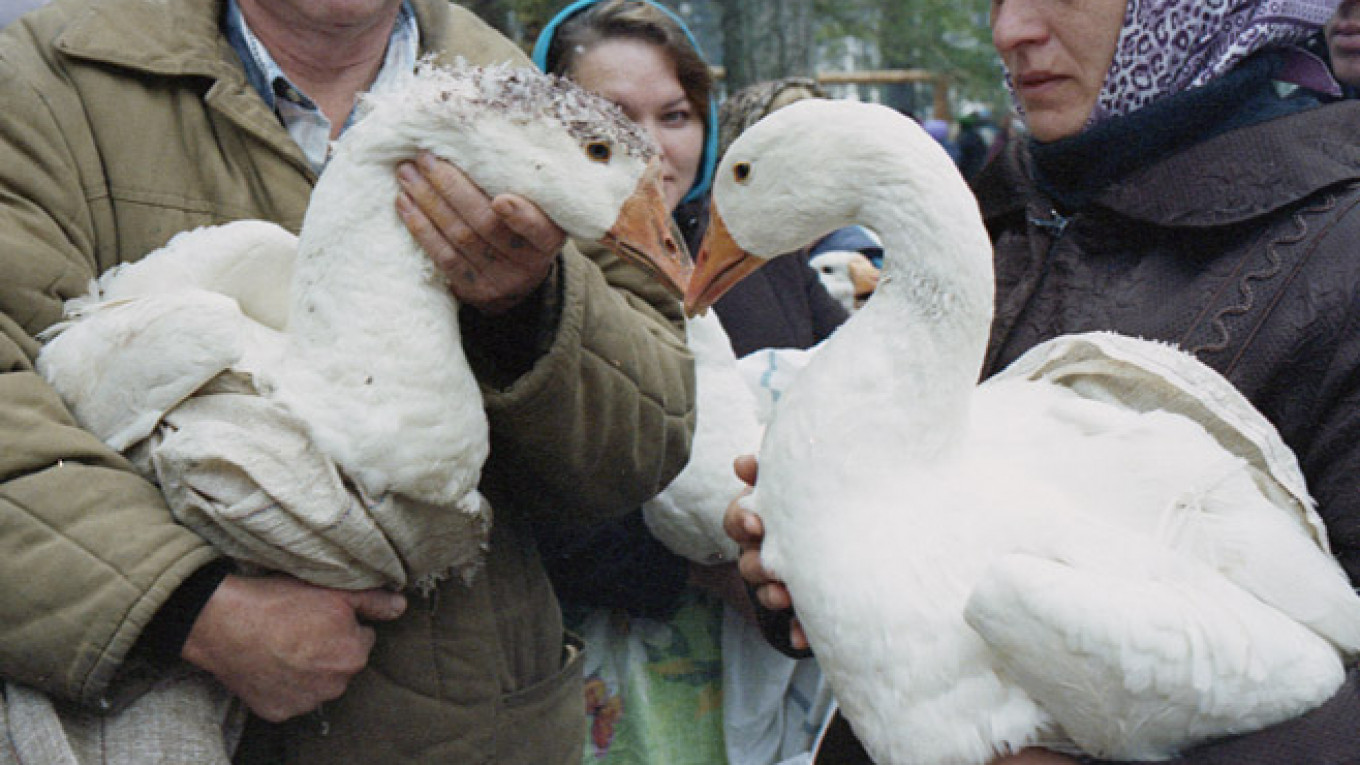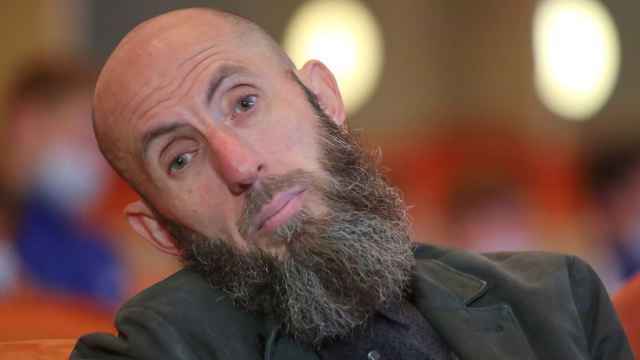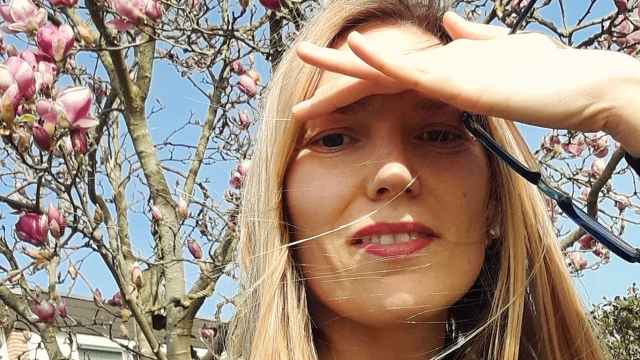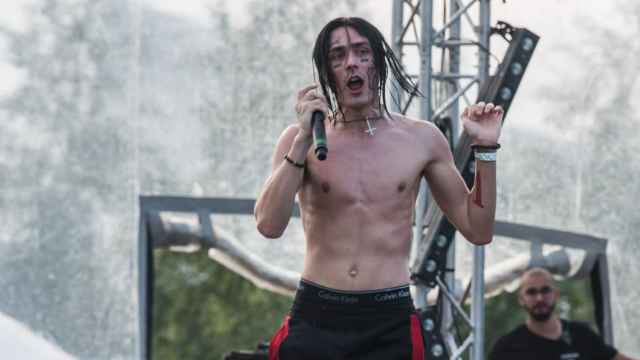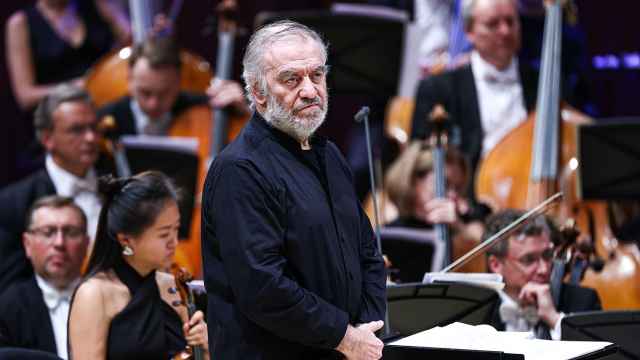A man smiles while lighting a cigarette in his kitchen as two friends arm-wrestle on the kitchen table in a photo. In another, three women in traditional costume stand on a snow-covered landscape. Their faces are covered.
The two photos show both the modern and traditional, a contrast that occurs again and again in "Group Exhibition" at Winzavod, which looks at the two Volga republics of Marii-El and Chuvashia.
The exhibition is not just photos, but also traditional cultural artifacts such as woven head-dresses in a show that has been put together by ethnographers and anthropologists as well as artists.
One of the photographers, Fyodor Telkov, "understood his task to create a link between ethnographical focus on costume and how the inhabitants live today," said Nikolai Ssorin-Chaikov, curator of the exhibit and an anthropologist at Cambridge University, pointing toward a photograph of an old woman in traditional Mari dress, including a necklace made of coins.
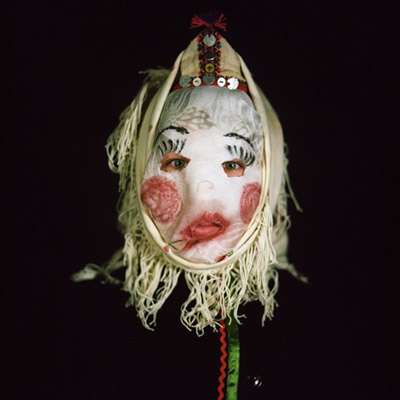
"She is wearing old coins from the Middle Ages, as well as Soviet and contemporary Russian coins. Even in this traditional costume, there is a mix of traditional and contemporary elements," said Ssorin-Chaikov.
In another picture, two young villagers, one in traditional dress and the other in a contemporary sports gear, are smiling at the camera, standing in front of a car. "If you look at modern village life, what is the important marker of identity? It is not your traditional clothing, but having a cool car and a sport suit," Ssorin-Chaikov said.
"We are trying to critically engage with the genre of ethnography and anthropology. In Russia it is traditionally focussed on a disappearing world with exotic touches, but we argue that ethnography can be a window into everyday life," he said.
There are 550,000 Maris in Russia, most living in Marii-El with some in the Sverdlovsk region and the Nizhny Novgorod region. One photo set is devoted to the Mari in the Urals, who are trying to revive their culture after years of decline, which has seen their language mix with Russian and the abandonment of holy groves.
In Marii-El, many Maris are assimilated with Russian, Tatar and other ethnic groups, but traditional culture, pagan rituals, clothing and festivities have been preserved in some areas.
The Chuvash people are native inhabitants of Chuvashia and in the republic number about 500,000. They are the largest group of Turkic people who follow the Christian faith, although traditional beliefs are a mix of polytheism and atheism.
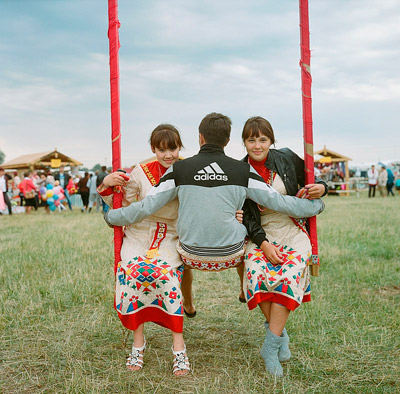
Modern and traditional combine at the Akatui folk festival in Chuvashia.
Father and son photographers Vladislav and Ivan Mikhalkov show images at the exhibition of Chuvashia decades apart, tracking the changes in Chuvash society. Multi-story buildings are shown in photos with branches attached — the branch is an ancient symbol for the universe.
As part of the project, "photographs with no textual context are accompanied by comments from sociologists, economists and political scientists, who give their opinion on what is being reflected in the pictures," said Marina Bobyleva from the Triumph Gallery, a co-organizer of the exhibit.
A picture of a peaceful rural scene has someone guessing that it is a river for fishing, while someone grumpily writes: "I don't like these photographs. They don't reflect my Russia. And they certainly don't match my internal impressions. So I won't describe them."
Photos by Japanese photographer Ikuru Kuwajima show Mari rituals include "Shoryk-Iol" or "Sheep's Leg" where adults and children search a sheep pen for white lamb for good luck in the coming year. The faces of the participants are covered to stop bad words escaping.
The project also takes a look at the capital of both republics. Yoshkar-Ola, the regional capital of Marii-El, is a surreal mix of buildings in different styles, looking here like a part of the Kremlin, there like a magic castle from a Disney film.
"It raises the question: 'What is tradition? What is modern?'" said Ssorin-Chaikov.
"Group Exhibition" runs till Sunday. Winzavod. 4th Syromyatnichesky Pereulok. Metro Chkalovskaya. www.winzavod.ru
Contact the author at [email protected]
A Message from The Moscow Times:
Dear readers,
We are facing unprecedented challenges. Russia's Prosecutor General's Office has designated The Moscow Times as an "undesirable" organization, criminalizing our work and putting our staff at risk of prosecution. This follows our earlier unjust labeling as a "foreign agent."
These actions are direct attempts to silence independent journalism in Russia. The authorities claim our work "discredits the decisions of the Russian leadership." We see things differently: we strive to provide accurate, unbiased reporting on Russia.
We, the journalists of The Moscow Times, refuse to be silenced. But to continue our work, we need your help.
Your support, no matter how small, makes a world of difference. If you can, please support us monthly starting from just $2. It's quick to set up, and every contribution makes a significant impact.
By supporting The Moscow Times, you're defending open, independent journalism in the face of repression. Thank you for standing with us.
Remind me later.


